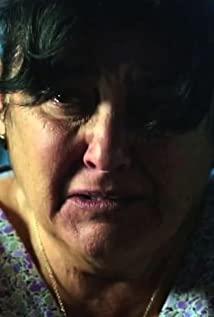Watching this film, we have to understand Spain’s political history. Spain’s political and civil liberties once under the rule of the totalitarian Franco were extremely suppressed. After the burst of the bubble economy, the country’s economy began to decline again and a large number of people unemployment. So what we see in the film is a dilapidated social scene. Young girls want to leave their impoverished hometown. They look forward to the outside world, but they become victims of crime, being exploited and killed. The film reflects the gloom and corruption of society in many places, the cynical local police, the officials who shelter criminals, the capitalists who squeeze the blood and sweat of workers, and even the father who sells drugs. In the beginning of the movie, we saw from the large panoramic view taken from high above is a beautiful land of intertwined gullies and craziness. God created this beautiful land, but sins continue to breed and spread in this land. The author portrays his characters in such a large environment.
The main characters in the film are two policemen, Pedro and Juan. Pedro is a clear lotus in this filthy mud. He is upright, dedicated, and loves the country and career. He was removed because of an open letter criticizing the general. Madrid, but showed inexperience in handling cases, impatience and recklessness, and the defects of unaccountable accidents. In contrast, his partner Juan, although he seems to be passive, likes drinking, having fun, and being with women, but he is quite old. He was a wise policeman and he was easy-going. He knew how to communicate with others and was able to observe his words and behaviors. This also enabled him to gain the trust of the victims' families later on. Pedro is an obvious positive character. Most of the film is narrated from his point of view. However, the theme and values of the film are more embodied by the character Juan, who is a multi-dimensional compound. The role is both righteous and evil, and the gods and demons are one. The reporter in the film revealed Juan’s past to Pedro. He used to be the Gestapo under Franco’s reign. He tortured and killed the protesters at the time. This made Pedro and the audience very hard to believe, even Hu Ann himself did not admit that this was the truth in front of Pedro, but Juan himself knew the true past best. In fact, he experienced a great inner struggle during the investigation process, because he was indeed a hands-on The demons full of people’s blood, the state apparatus under Franco, the leader of Nazis and totalitarianism, have now become law enforcement agents who uphold justice and avenge people’s violence. The victims and their relatives are the only sustenance here. There is a binary opposition between good and evil, truth and falsehood in the character. The people killed in the cases and the grieving families of the victims remind Juan of the crimes he committed, and he seems to think of those killed by him. People’s family members may also be so sad and indignant. Although almost no one knows his past, the strong sense of guilt and the actions he has done are still the biggest shadow in his heart. On the other hand, the murderer pursued by Juan is the self he used to be. For him, catching the murderer may be able to complete the salvation of his soul. A question has always been raised in this film, who is Juan in the end? What kind of person is he? The cold-blooded and brutal Gestapo or the easy-going and upright people's hero? Finally, when they fought with Sebastian, the real murderer, the guardian, Juan stabbed him with Queeny’s dagger for at least twenty times, piercing Sebastian’s body and piercing him. His own sinful soul, Sebastian's corpse fell into the river and went away. Has the devil Juan in the past really disappeared?
At the end, Pedro was called a hero by the media. As a recognized positive figure, this is well-deserved and justifiable. In the bar, Juan excitedly introduced Pedro to the two women during a drunk party: "This is my colleague, the hero." He was so excited, in fact, he was also celebrating himself. He has changed his identity from an executioner to a hero, completing the real self-salvation.
The clues of the film's investigation are quite regular, even loose and cumbersome, but I think the essence of this film is the dialectics and thinking it puts forward and the in-depth characterization of the characters. And the atmosphere of the film is also very well created, which mainly relies on several image systems and suggestive elements.
The bird appeared twice in Juan’s point of view, once after Juan took the man’s necklace and opened it. There is a close-up shot of a hand shaking constantly, and below is Juan’s horrified expression. , He fainted after seeing a bird flying into the house after urinating blood. The second time, Juan was knocked out while monitoring Queenie. After waking up, he saw flocks of waterbirds by the river. One of them stood motionless in the water and looked at him calmly. The bird is a symbol in the film, it seems to represent the souls of those who died under his hand, and they are looking at Juan today from their point of view, and the victims of political damage are more than a few unfortunate people. The flocks of waterfowl flying over the swamp seem to symbolize all living beings under dark politics.
The psychic, the woman who is said to be a psychic, hinted at Juan’s death. However, the hero does not believe in fate. He does not want to die with a sinful identity. He wants to fight against fate. This makes the character extremely strong Energy is also the charm of the character.
Looking down on the big panorama, there are a total of six shots like this in the film, with beautiful marshland in the opening; after the girl’s body is found by the river; after the girl who was killed is buried; the psychic predicts Juan’s death after they leave by boat ; After killing Sebastian and saving the girl Marina; at the end, after Pedro and Juan drove out of the village. This kind of aerial panoramic view has been used many times, and the subjective point of view of the character jumps out to become an objective point of view of God. At the end, two police detectives drove away and looked down. The car slowly drove on the small road in the field. Surrounded by paddy fields, the car was drawn back across endless fields and roads. The murderer was arrested. After breaking, it seems that calm has been restored here, but the crime is still spreading on this vast land.
After watching the movie, I can’t help thinking, is Sebastian the only murderer? Queenie, who seduced the girls for profit, lied to work for the girls and finally raped them, the capitalist Colares, the officials who sheltered him, the administrator of the hunting lodge, the father of the two girls, and this repressive and corrupt society Are they all murderers who killed them? Wasn't the sinful Gestapo Juan also a tool created by Franco, just like the title swamp, alluding to the world as if it were in this swamp, sinking slowly in the dirt.
View more about Marshland reviews











